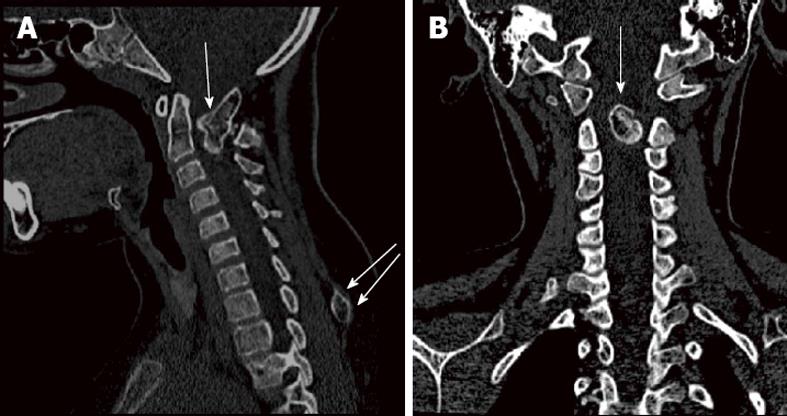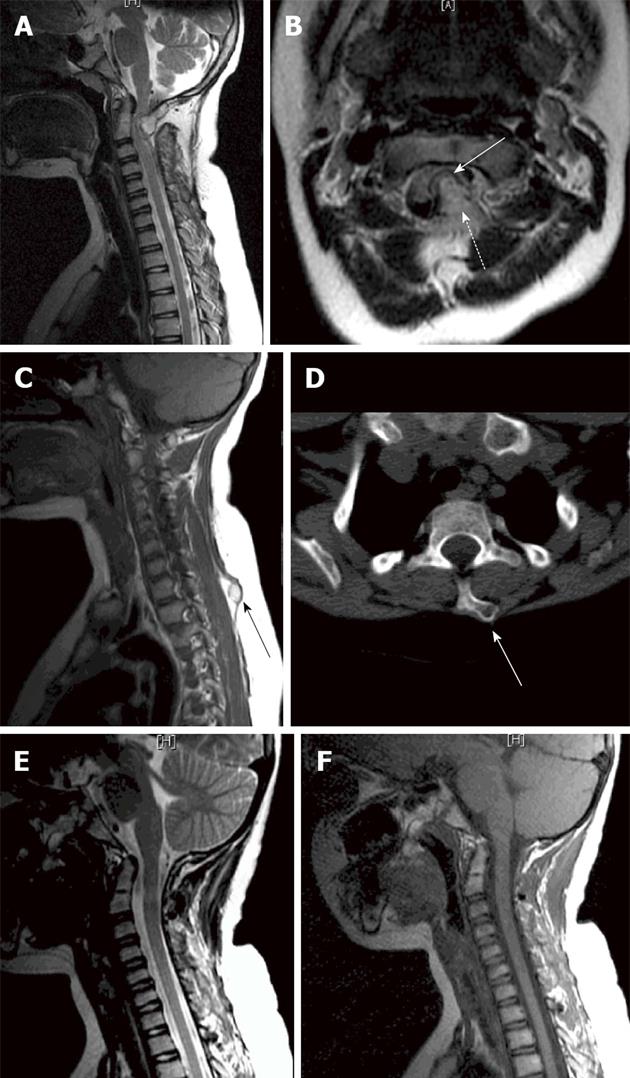Copyright
©2013 Baishideng Publishing Group Co.
Figure 1 Computed tomography scan of the cervical spine.
A: Sagittal; B: Coronal reconstruction showing a bony outgrowth filling the spinal canal, arising from the inner posterior arch of C1 at the left site, growing anteriorly and obliterating most of the spinal canal (top single arrow). Another exostosis was incidentally found at the spinous process of T1 (bottom double arrows).
Figure 2 T2, T1-weighted magnetic resonance imaging.
A: T2-weighted magnetic resonance imaging (MRI) sagittal image; B: Axial cut, demonstrating a C1 posterior mass (solid arrows) severely compressing the cord. The mass is hyperintense, whereas the cortical margin is hypointense (dotted arrow); C: T1-weighted MRI sagittal image; D: Bone window computed tomography scan showing T1 spinous process exostosis; E: Postoperative sagittal T2-weighted; F: Postoperative sagittal T1-weighted MRI showing adequate decompression of the spinal cord and no visible lesion.
- Citation: Elgamal EA. Complete recovery of severe tetraparesis after excision of large C1-osteochondroma. World J Neurol 2013; 3(3): 79-82
- URL: https://www.wjgnet.com/2218-6212/full/v3/i3/79.htm
- DOI: https://dx.doi.org/10.5316/wjn.v3.i3.79










